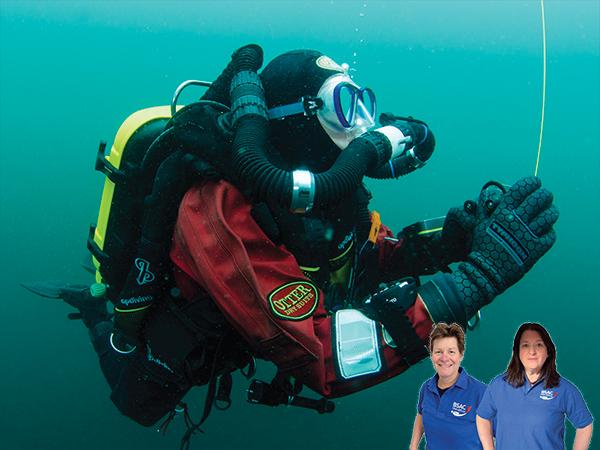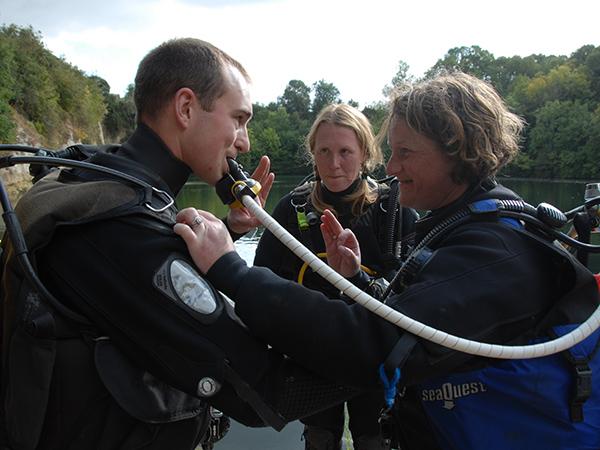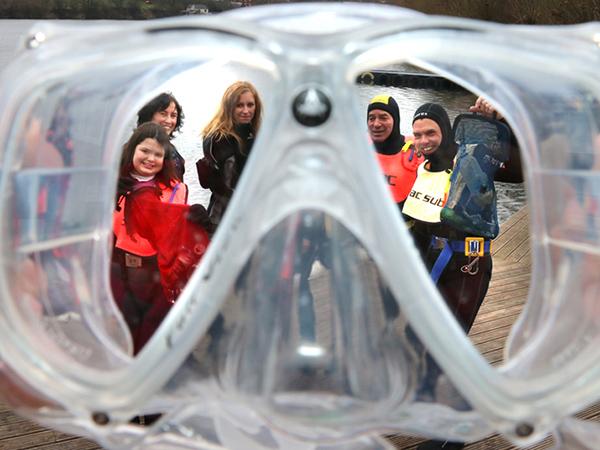A risk assessment is an assessment of how diving and diver training activities are conducted.
Its purpose is to evaluate whether sufficient precautions have been put in place to prevent harm befalling any of the persons taking part.
Definitions: ‘hazard’ – anything with the potential to cause harm, ‘risk’ – the likelihood that harm from the hazard will be realised
There are five steps in conducting a risk assessment
Step 1 - Identify the hazards
Identify the potential hazards to the participants from the activities being carried out and from the environment in which they will be carried out. Some hazards (e.g. rapid ascent) will be common to all environments from swimming pools to hard boat dives in the open sea. Others will be very specific to the particular location or activity. Identify only significant hazards. Including those of a trivial nature only makes the process unwieldy and detracts from the identification of those that are significant.
Step 2 - Decide who may be harmed
Assess how many hazards will apply to all divers, whereas some will be more appropriate to particular groups such as trainees. How they will be affected is determined by identifying the ‘Maximum Severity’ to occur if subjected to that hazard
Step 3 - Assess the risk
This is a matter of judging each of the hazards identified to determine whether the risk is considered to be high, medium or low. Often common sense will allow this judgement to be made directly from experience and knowledge. In other cases, a judgement can be made by considering the frequency with which the risk can be expected to occur and the ‘maximum severity’ of the consequences if it does. One way of expressing this assessment is by using the following matrix:
| Risk Evaluation Matrix | |||||
| Severity > | Fatal | Major Injury | Moderate Injury | Minor Injury | Trivial Injury |
| Very common | High | High | High | Medium | Low |
| Frequent | High | High | Medium | Medium | Low |
| Occasional | High | Medium | Medium | Low | Low |
| Rare | Medium | Medium | Low | Low | Low |
Step 4 – Record the assessment
For clubs (branches) recording each assessment is essential and each assessment plan should form part of their filed and recorded RA information.
Step 5 - Periodically review assessment
Risks may change with time. For some risks such changes may be very infrequent, while for others they will vary with each location or occurrence. Swimming
Swimming Pools
For instance, risks involved in training in a swimming pool may only vary when either the type of training to be carried out is varied or the swimming pool environment itself is subject to change. Once prepared, a risk assessment for such a venue will remain valid for a considerable period.
Sheltered Water & Open Sea
Where diving is carried out in sheltered water or open sea conditions, some aspect relevant to the diving activities may not change, while other aspects relevant to the site conditions may change on each occasion. For such a location a risk assessment can be prepared which will cover many of the risks which remain constant, only those risks which vary (e.g. Weather, underwater visibility or specific activity dependants) needing to be addressed specifically on the day and throughout the day.
‘Generic’ or ‘Specific’?
Risk assessment plan
Many risks may, therefore, be ‘generic’, that is they remain unchanged but relevant to the location. This is the content of the Risk Assessment Plan that is required by the Estate Owner.
Dive manager planning sheet
Others are more ‘specific’, implying that they may change depending upon the diving activity, location and water conditions. These risks can be covered by the dive planning sheet used by the Dive manager on the day. It should identify aspects that exist on the day of diving that is different from those listed in the Risk Assessment Plan.
HSE advice
The risk assessment should, however, be reviewed on each occasion and throughout the day to ensure that the risks identified are still valid. Any changes should be noted, signed and dated to show the changing situation has been assessed, that no further risks have arisen and that the appropriate controls are in place.
Useful downloads for carrying out risk assessments:
- Flow chart of generic risk assessment plan
- Blank risk assessment form
- Pool safety and risk assessment
- Sheltered water risk assessment
- Open water risk assessment
- If you need a risk assessment PowerPoint presentation please contact us.










